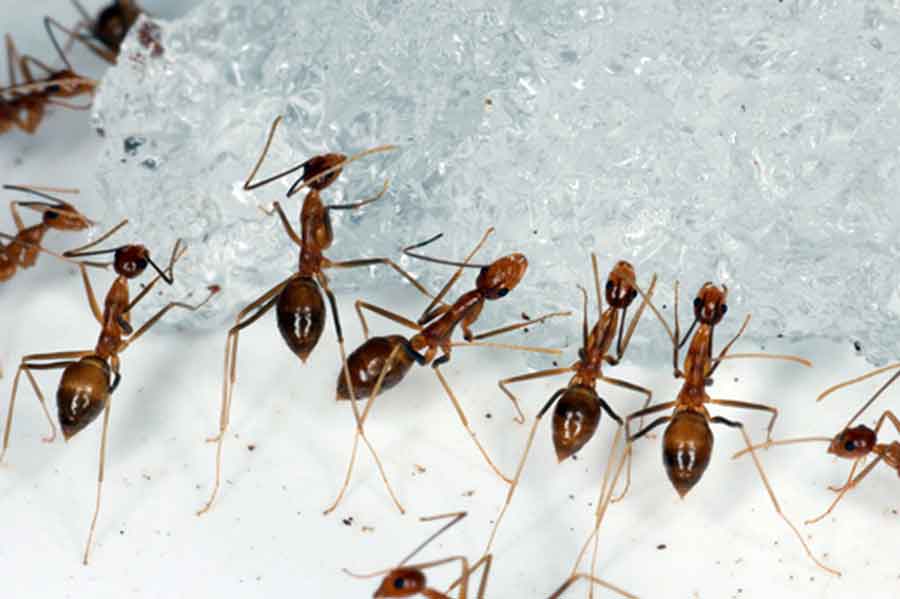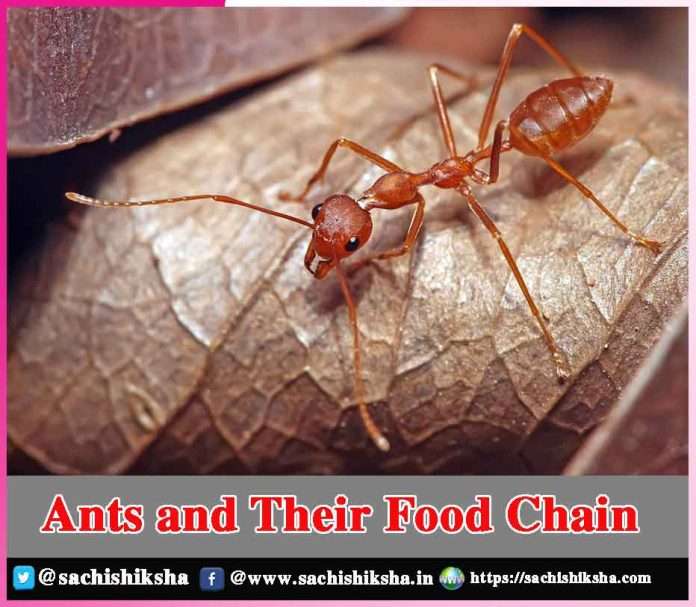Ants and Their Food Chain
Introduction: An ant is a communal insect in the Formicidae family, which is a component of the group Hymenoptera. This suggests they are linked to ants and honeybees and most likely developed from an identical moth-like progenitor more than 140 million years ago throughout the Cretaceous era of the history of the earth.
Also Read:
- Food Security
- The Age Of Ambition
- Basics of Stock Market
- India’s Unicorn Boom
- Union Budget 2022: Betting Big on Infra
- Human Rights Day
Table of Contents
As Voracious Scavengers:

A large proportion of ants are opportunist eaters who will consume flesh. Insects and decaying objects are included. Ants are well-known for their ability to disassemble even deceased lizards with their razor-sharp teeth and transfer the fragments back to their homes. The majority of ants are carnivorous, although certain kinds only eat plants. Leaf-Cutter ants, for instance, are virtually entirely vegetarians.
Driver Ants:
Certain kinds of ants will actively seek out and devour living animals. Driver ants, for example, are notorious for embarking on enormous hunts that rid the extensive jungle floors of every living thing, including other insects, small mammals, and other creatures that exist. Ants have an incredible sense of smell, enabling them to detect odors that influence how they act and communicate with one another.
Distinct Aroma:
Each ant has a distinct aroma that is created by a combination of chemicals called pheromones that are attached to the external parts of its body. Despite expressing a word, tiny variances in each ant’s body odour give behavioral signals that enable the insects to sustain sophisticated social communities with diverse responsibilities for queens, employees, nurses, and warriors. They can even detect an invader from a different community using extraordinarily delicate antenna rather than noses.
Excellent Sense of Smell:
Ants have an excellent sense of smell, which allows them to find appropriate partners, find food, identify their nest, gather people to fend off nesting predators, and recognize and interact with all of the communities or castes that make up their colony.
Behavioural Control:
In fact, the chemical scents released by the ants influenced how they interacted with one another. The queen, for example, emits “a mixture of body odors” that every member of the colony detects causing them to comply with her, even if it means risking their own safety for her. It’s a form of psychological control or behaviour control.
Bottom at the Food Chain:
Ants are towards the bottom of the food chain and on the periphery of the network of food sources,and plenty of creatures are fond of eating them. Certain mammal species in the world’s tropical climates specialize in consuming ants. The majority of these animals are known as anteaters, and they have slender tongues that they use to entice ants into their jaws. There are several frogs, arachnids (eight-legged predators), avian attackers, snakes, and other reptiles like eating ants. And any ant which falls into a river, lake, or lagoon will almost certainly get eaten by a fish. Some individuals even consume ants.
Special Ants in Amazon Jungle:
One type of ant found in the Amazon jungle smells like a lemon drop, and young people that reside there consume as many of them as they could! Ants eat practically everything, including insects of all kinds to decayed flesh from animals to fungi (fungus) grown in their subterranean farms.
Ants` Workings During Winter:
At the time of winter, ants slumber. In the winter, subsurface temperatures are substantially warmer, and ants are able to survive in their nests. Ants collaborate to get ready for winter hibernation similar to how they collaborate during summertime. They gather food, store it in their tummies, and build their communities for the long winter ahead. During this period, they collect as much food as is required to prevent the queen from going hungry, as well as additional nourishment for the employees.
Ants have a specific region in their stomach termed crop which enables them to preserve food over the winter. Ants will preserve every bit of energy as they can throughout the colder months due to the limited nourishment resources accessible. They rarely move often and like to congregate in order to enhance the quantity of warmth in the colony. They can collaborate to remain comfortable while maintaining the queen ant comfortable.
Ants` in Southern United States:
Certain kinds of ants are more adapted to living in freezing temperatures than another. Ants in the southern United States normally aren’t obliged to be concerned about temperatures below freezing and just need to hibernate for a brief period of time.
What Ants Consume?
It is difficult to give thought to what ants consume because they are such a wide range of species. Ants eat a variety of foods, based on the species and environment in which they dwell.
Ants as Predators:
Most ants are predators, which mean they eat insects and other arthropods may even chase larger animals like lizards or mice. Since they are hazardous, they frequently use the color red as an indicator for possible predators, which is referred to as aposematic.
















































